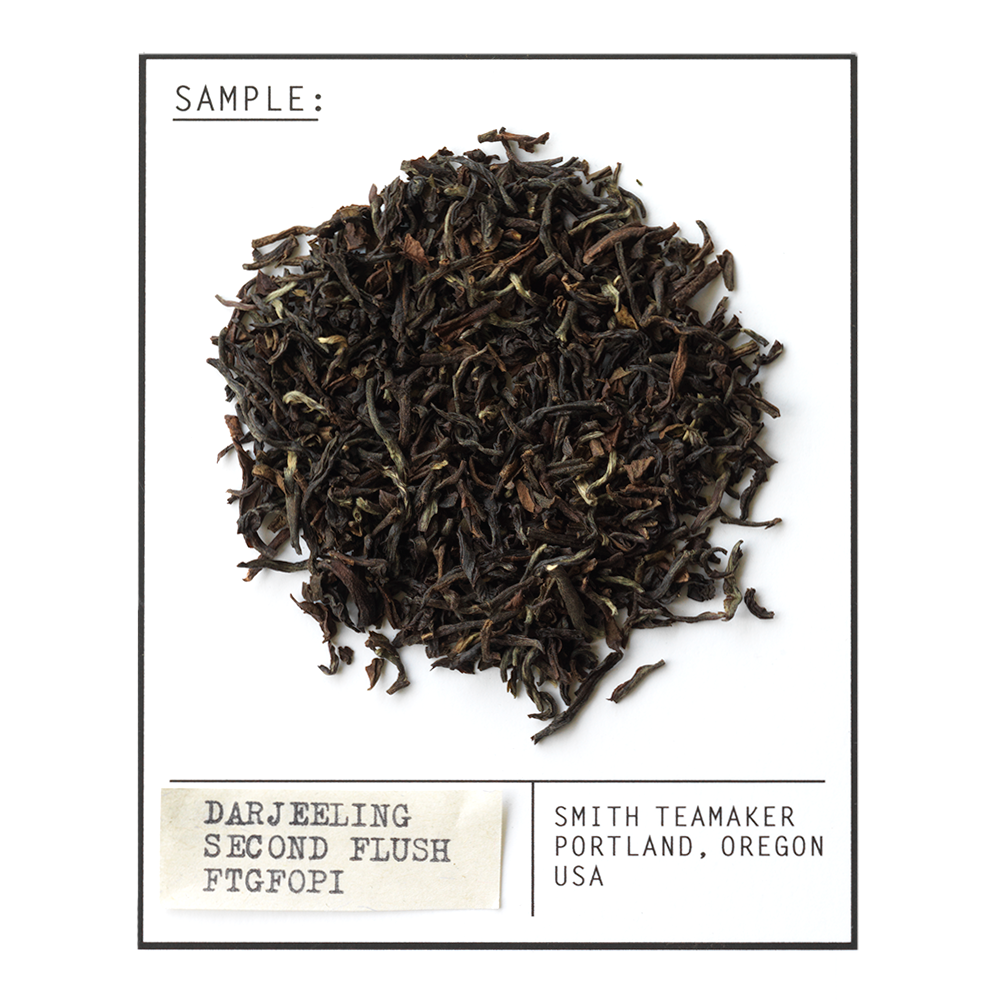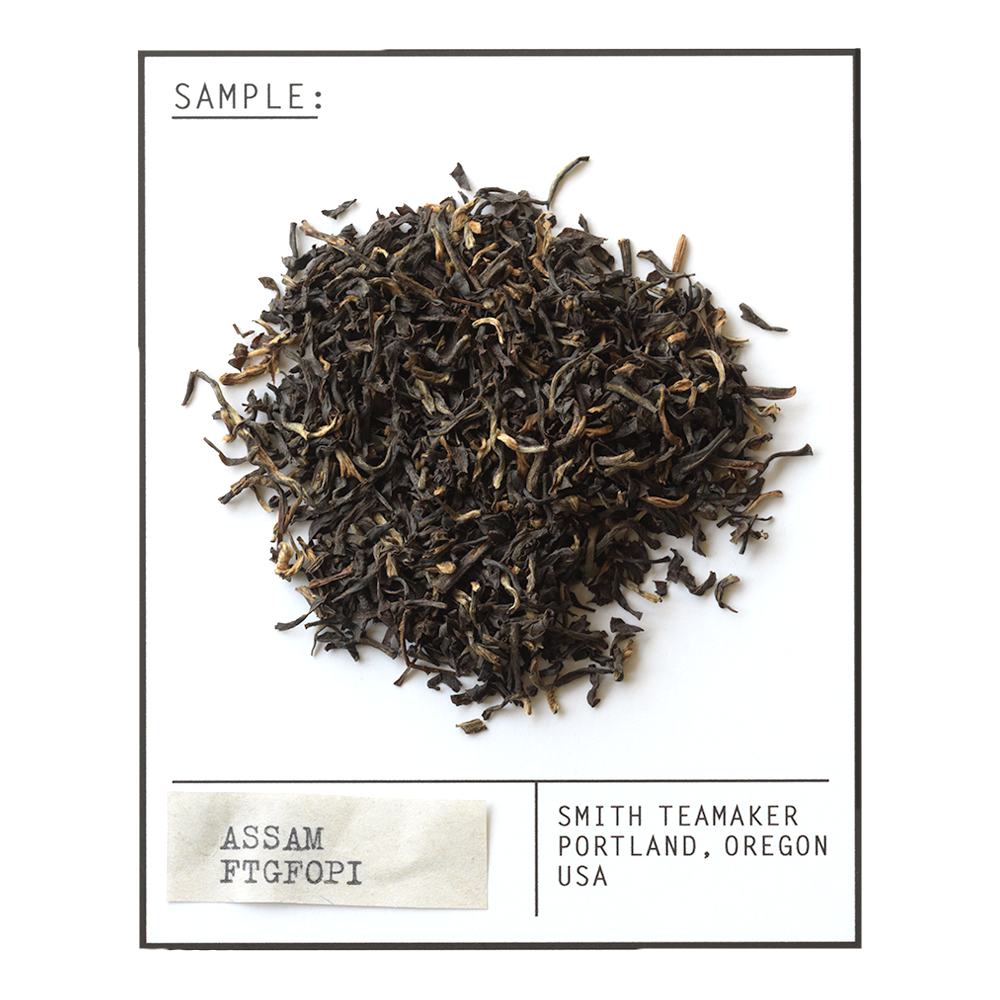





Ingredients
Black teas from India and Sri Lanka, ginger root, peach and nectarine natural flavors.
Blend Numerology
No. 35: Just above ice cube temperature. In other words, nice and cold.
Preparation
Bring spring or freshly drawn filtered water to a boil (212°F) and pour 2 cups over sachet.
Steep 5 minutes, discard sachet and top off to one quart with filtered water.
Stir briskly and serve over ice.
- Select an Ingredient:
- 2nd flush darjeeling
- assam
- ceylon dimbula
- ceylon nuwara eliya
- nilgiri
2nd Flush Darjeeling
Indian Black Tea
Darjeeling, once a British hill station, is known for producing some of the world’s most prized and expensive teas. The high elevation of Dajeeling tea gardens puts stress on the bushes and results in teas of exceptionally nuanced flavor. Teas produced during this period have fuller flavor than teas from the first flush, with notes of muscatel grape, wintergreen and sage.
Darjeeling
Nestled in the foothills of the Himalayas in northern India, the Darjeeling region is home to 87 tea gardens. Second flush begins in early May and lasts for about 30 days, where the tea bushes are plucked every seven days.

Assam
Indian Black Tea
Assam tea is the biggest, brightest, richest and most astringent tea made. It is the backbone to breakfast style teas of nearly all brand and quality although it is also used in many blends for body and top notes. Assam is less floral and has more bread or biscuit-like flavor than other origins, and is often described as malty or coppery.
Assam Region
The Assam region is located in Northeast India, and borders Bhutan and Bangladesh. At near sea level, this region produces teas that are full flavored, rich, and chewy with distinct characteristics of caramel and malt. The best teas from this region are plucked and processed in June and July, a harvest also known as the 2nd Flush.

Ceylon Dimbula
Sri Lankan Black Tea
The Dimbula region is directly opposite the Uva region in Sri Lanka. Dimbulas are often called “Westerns” in the tea trade. They have a reddish amber color in the cup, with a medium to full body, slightly fruity flavor and mineral notes. Ceylon Dimbulas are often used in medium bodied blends, Earl Grey formulas and other flavored teas. The best Dimbula teas are produced from December to February.
Central Province
The Central Province, true to its name, is located in the heart of Sri Lanka. It is said that in its capital city of Kandy, the tooth of the Buddha resides in a temple, which alone makes this place worth visiting. Here at Smith, just as holy, are the many breathtaking high elevation tea gardens that make a significant contribution to the total output of high grade Sri Lankan teas, which we look to buy between the months of December to February.

Ceylon Nuwara Eliya
Sri Lankan Black Tea
A well known, yet somewhat under-appreciated, tea from the area situated between Uva and Dimbula. Grown and processed at elevations above 1500 meters, Nuwara Eliyas have a very light color and body similar to some first flush Darjeelings. While their body and cup color are light, the flavors can be intense and floral, which add brightness and character to blends.
Central Province
The Central Province, true to its name, is located in the heart of Sri Lanka. It is said that in its capital city of Kandy, the tooth of the Buddha resides in a temple, which alone makes this place worth visiting. Here at Smith, just as holy, are the many breathtaking high elevation tea gardens that make a significant contribution to the total output of high grade Sri Lankan tea, which we look to buy between the months of December to February.

Nilgiri
Indian Black Tea
Much like Darjeeling, Nilgiri makes primarily orthodox teas. These teas have more flavor than Assams, and more body and color than Darjeelings, giving them a pivitol role in formulation.
Nilgiris
Nilgiri translates to "blue mountain". It is a range of mountains that are part of the larger Western Ghats and are located in the states of Tamil Nadu and Kerala in Southern India. With over 24 peaks reaching higher than 2,000 meters, it made this area perfect for growing tea and other botanicals, along with providing the British in the Raj era respite during India's long hot summer. Tea is harvested between January-February and secondarily between August-September.
